
Jon is a senior leader and deputy headteacher working in a large north-east secondary school. He has experience working in three different schools over 15 years. He’s very interested in creative and innovative teaching practices which engage students and ultimately raise achievement.
Jon regularly presents at TeachMeets and teaching conferences both in the UK and internationally via Skype. This has included presentations to conferences in Manhattan, Ohio and Dubai. He was selected to carry the Olympic Torch at the London 2012 Olympics. Jon has spoken to schools throughout the USA, as well as Australia, New Zealand, India, Pakistan and France.
Jon Tait is an experienced senior leader and current deputy headteacher working in a large and diverse secondary school in Middlesbrough. As a classroom teacher, he has experience of working in 3 different North East schools for over 15 years. He's also an author, speaker, coach, and consultant, with an impressive list of contributions to the education sector. Joining us as a keynote speaker for Lead LIVE Darlington, we caught up with Jon to discuss his work and new book, "Bloomsbury CPD Library: Senior Leadership".
Collaboration between schools has recently been said to be the key to raising standards, with experts sharing good practice whilst learning from one another. Throw in an international element with two schools collaborating across the globe and you’ve got some pretty excited students and staff! How often do students in the UK get to meet, chat and dance for students on the other side of the world and then have the technology available to immediately judge and give feedback on these performances? Well that’s exactly what happened at Woodham Academy in County Durham and Merton Intermediate School in Wisconsin, America earlier this year; sharing good practice and resources, and collaborating on creative and innovative projects.
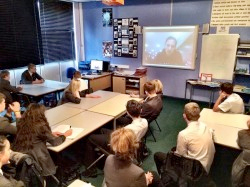
This practical guide is for teachers looking to adopt a flipped learning approach to their classroom.
If you’re still not sure what a flipped classroom looks like, or if you want to confirm what you think you know, take a few minutes to read my guest post for the Senior Leaders site: ‘The Future of Learning’.
To create my own flipped learning videos, I use the brilliant Explain Everything app for iPad. For £1.99 you really can’t go wrong with this app. The following guide shows how I create my videos using this app.
In order to test the hypothesis that omitting a grade when marking a student's work will ensure he or she pays more attention to comments and suggestions, Jon Tait conducts an experiment with his class and notices quite a distinct change in atmosphere when their homework is received.

For some time now I have been toying with the idea that grading student work might just be one of the biggest barriers to improving student performance. Sound strange? Let me explain.
My theory is that we have all been programmed by society to look for a grade, result or classification on anything important we do in life. This system informs us of our level of success. What we aren't good at processing, however, is appreciating what to do to improve.
Take for example your driving test – when you heard the words 'passed', did you pay any attention to your 'minor faults' or what you weren't that good at? Or did you just want to grab the keys and get going? My point is that students rely too heavily on their grades and view these with far more importance than their comments and suggestions for improvement.
Teachers can only offer a certain amount of motivation to students, particularly as they are usually the final destination of class and home work. With technology gaining ground in classrooms, however, there is no excuse not to enthuse students with the potential for their work to be shared with the very people that are inspiring their work - authors, artists, scientists, entrepreneurs etc. This is where the benefits of using social media in education really come into play.
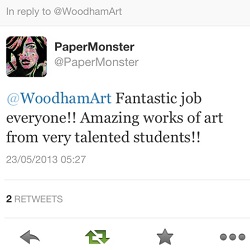
After reading 'An Ethic of Excellence' by Ron Berger I was inspired to try and use his core principles to make a difference in my own school.
One of the core principles that struck me from Berger's work was his strong belief that 'to truly engage learners, there needs to be a real audience for their work'. This really rang true for me and took me back to a comment that Julia Skinner made about her fantastic work with the 100 word challenge. During a TeachMeet presentation, Julia asked us all 'how an audience of one person (us, the teacher), can be that motivating'?
If the work always stays on our desk and never goes any further, we are only just scratching the surface in terms of student motivation to do their best. Julia continues to organise a weekly 100 word challenge to engage students in writing, knowing that they'll receive 'real comments' from 'real people' through the power of blogging – hence the increased motivation coming from having a real audience.
Inspired by a recent Pedagoo teacher meet, Assistant Head and PE specialist Jon Tait puts into practice a strategy to encourage students to work harder and faster by giving them a creative visual tool which shows how far each one is progressing with the lesson objective.
The simple-to-draw circular board, which can be segmented several times into progressive achievements, could even be projected onto an interactive whiteboard. It's a great concept which makes each student more aware of their own learning pace, plus there's bags of potential for award schemes such as virtual stickers to be sent to a student's iPad once he or she climbs a 'ring'. Read his post to check the photos of his board - you might be surprised how well it worked!
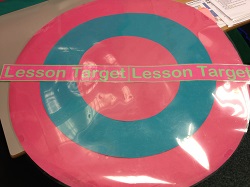
Last weekend (18/5), I was lucky enough to be able to attend and present at the hugely popular Pedagoo Sunshine event at Joseph Swan Academy in Gateshead.
As well as presenting tips and tricks to other teachers from across the country, I was fortunate enough to be able to listen to Jim Smith from Hope Valley Technology College in Derbyshire. Jim was presenting on a range of different topics from his ‘Toolbox of Strategies’.
One of the ideas that I pinched from Jim was his lesson objectives target board that his technology department have had produced for all of their classrooms. See below:

Over the past few weeks I've been privileged to read so many great blog posts by fellow teachers on the numerous benefits of both tweeting and blogging. Having an online presence in order to collaborate and learn from others is now fast becoming one of the most popular and interesting ways to improve your day to day teaching. More and more teachers are getting involved in this online community, which means there are more and more opportunities to network with like-minded people.
My motivation to write this post was not to re-invent the wheel, but instead to bring together the best posts that have been written on this area. It should be seen as a one-stop guide for both teachers looking to dip their toe in the online teaching community, and also the more experienced 'Tweachers' amongst us.

With the advances in technology hitting our classrooms on such a regular basis, we sometimes forget that the old ways are sometimes the best ways. You can have all the technology in the world, but sometimes being creative with what you've got can be a lot more powerful.
I stumbled across a fantastically creative, but amazingly simple, website a few months ago called Dear Photograph. Although the website is not intended to be an educational tool, with a bit of creative thinking, you'll find that the idea can be used to promote learning across a range of subjects.
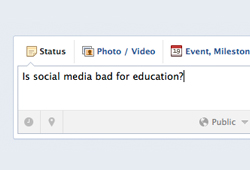
After taking part in the online #pechat on Twitter this week - about the use of social media within physical education - it got me thinking about the use of it generally in education. There are pockets of good practice springing up all over the place, creating fast and effective communication with students, but in my opinion it is largely being held back by a stigma that social media is all bad news.
Let’s explore the myth that social media is bad news and creates problems for schools.

During my visit to the Association for Physical Education's national conference, I was inspired by Keynote speakers Iwan Thomas and Richard McCann talking about how 'attitude is everything', and that it's all about saying 'I can'. Both of these speakers were absolutely right, but it got me thinking about one essential ingredient that all of our kids need before they can be confident enough to say 'I can': poker chips.
It took me back to the first ever teacher training video that I ever watched as a GTP student, learning my trade in a school in special measures just over 10 years ago. I vividly remember sitting down to watch this video with the rest of the teaching staff and being sceptical about what I was about to see. However, after just a few minutes I was hooked and have always remembered the powerful message that was conveyed by Rick Lavoie. His message was simple: our kids need to be given self esteem by us as teachers and parents if we want them to join in the game of life. We need to give them poker chips every day so they feel confident enough to play alongside the popular kids at school, enough poker chips so they can answer questions in class, and enough poker chips so they can take on the challenges that life throws at us.
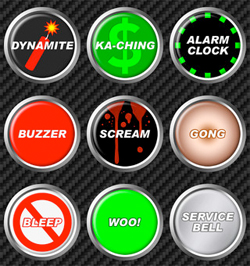
Over the past month, my GCSE PE class have been involved in directed revision classes for their forthcoming exam.
I wanted to do something that freshened this up and caught the students off guard, taking them way out of their comfort zone. I had decided on my drive into school this morning that I was going to trial a student led revision lesson that involved the students presenting different areas of the syllabus to the whole group. I wanted to make it similar to a TeachMeet event, having presentations strictly timed, hence the name 'TeachMe'.
Students were told that they would be selected randomly via my name selector on the interactive whiteboard and that they would have exactly 3 minutes to present to the group, with a clock counting down on the whiteboard behind them. Each student, once selected, had to come out to the front of the class, pick a topic from the Wonderwall of topics and then deliver it.
1,300+ guest writers.
2,500+ ideas & stories.
Share yours.

A community-driven platform for showcasing the latest innovations and voices in schools
Pioneer House
North Road
Ellesmere Port
CH65 1AD
United Kingdom